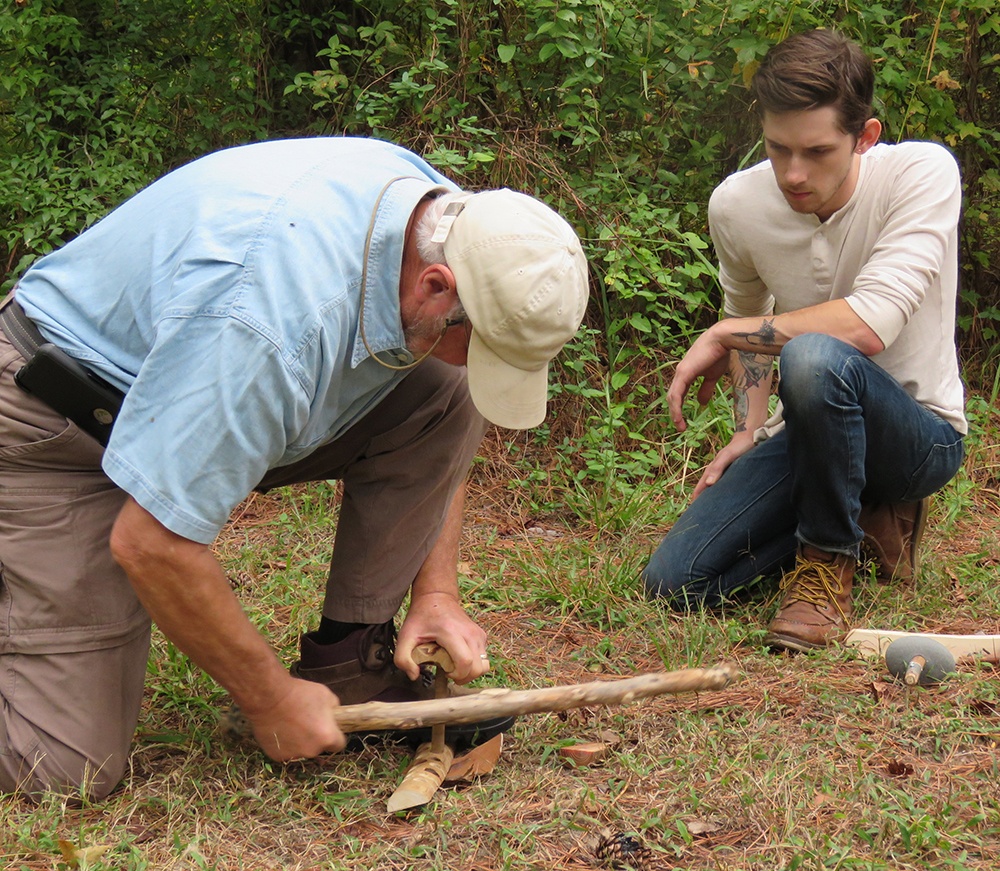How do you start a fire and get clean water without modern tools? An expert explains the essential basics of primitive camping.
Call it escapism, nostalgia or recreation, but getting back to basics by primitive camping is a relaxing way to rejuvenate the human spirit. The smell of wood smoke, the rustle of wind in the trees and a blanket of stars above - it doesn't get much better than this!
 Camping has evolved. Tents and lean-tos have been replaced by pop-up campers, travel trailers and motor homes. Nothing wrong with these, but the sound of a generator in the next campsite is not very relaxing.
Camping has evolved. Tents and lean-tos have been replaced by pop-up campers, travel trailers and motor homes. Nothing wrong with these, but the sound of a generator in the next campsite is not very relaxing.
One way to get back to basics is primitive camping. It is not as easy to find wilderness campsites in the east as it was in past decades, but there are still "out of the way" places that offer peace and solitude. Some state parks and commercial campgrounds are relatively deserted in the winter months. We have found winter camping to be desirable for three reasons:
- Less competition for campsites, resulting in quiet, peaceful camping. The colder weather dampens the enthusiasm of many casual campers.
- Little or no insect problems thanks to the suppressed metabolism and die-off of insects due to colder temperatures.
- More enjoyment of wood fires, especially for cooking. Summer heat negatively impacts camp fire use, but winter enhances the warmth and the smell of wood smoke.
Combining camping with a hunting or fishing trip only adds to the enjoyment. It keeps you close to the action and creates a special time of camaraderie with companions. Nothing beats food prepared in the outdoors.
How to start a fire during primitive camping
As a student of woodcraft and instructor of primitive and survival skills, I find time spent at the remote campsite offers a chance to practice ancient skills such as fire starting with primitive techniques. Several methods include:
- Using a bow drill - This method requires proper woods for spindle and fireboard and precise technique for success.
- Flint and steel/char cloth - Mountain men relied on steel and sharp flint to create sparks to ignite char cloth. Create char cloth by enclosing 100% cotton cloth in a small tin with a hole punched in it. Place in fire for a short time. Combustion occurs, but minimal oxygen is available for a flame, creating char cloth.
- Ferrocerium Rods - These rods combine iron and magnesium to create hot sparks when scraped with a metal blade.
When outdoors, extreme caution must be used with open fires. Clear a space of any combustible material around the fire. A fire ring may be made of stone, but don't use stone from streams as they may explode due to moisture retention.
 Gene Cunningham, left, uses a bow drill to start a fire while the author's grandson, Clark Thurston, watches.
Gene Cunningham, left, uses a bow drill to start a fire while the author's grandson, Clark Thurston, watches.
How to purify water during primitive camping
When backpack camping, the weight of water becomes an issue if a long distance hike is involved. If a clean water source is available at the campsite, only pack enough water for the trip into the site. Water may be purified by one of the following four methods:
- Filtering - Filters do not remove all viruses or harmful bacteria. Use with caution.
- Pills - Commercially available pills work, but leave an undesirable taste. They are not recommended for people with high blood pressure or other conditions.
- Drops of bleach - This will purify water, but also will leave a strong taste.
- Boiling - This is the simplest method, and one that I use. Water should be brought to a rolling boil for a minimum of one minute, but two is safer. If sediment is in water, it may then be filtered.
Best options for shelter when primitive camping
When selecting shelter type, consider lightweight nylon tents, tarp lean-tos and hammocks. Lean-tos are great, but normally limited to warmer periods. Enclosed nylon tents are fairly light, include shock-cord poles and are warm when combined with a closed-cell sleeping pad and an adequate sleeping bag. Hammocks are becoming more widely used and are very lightweight, strong and available with rain fly to repel rain or dew.
Depending on the nature of the trip, food and utensils can range from dehydrated food (add water only), to a normal range of standard foodstuff. If a lot of hiking is involved, carry high energy snacks to keep your body operating efficiently. Cooking utensils should be selected based on weight and nature of the expedition.
Whatever your choices, getting back to basics by primitive camping is one of the purest forms of recreation.




.jpg)




















